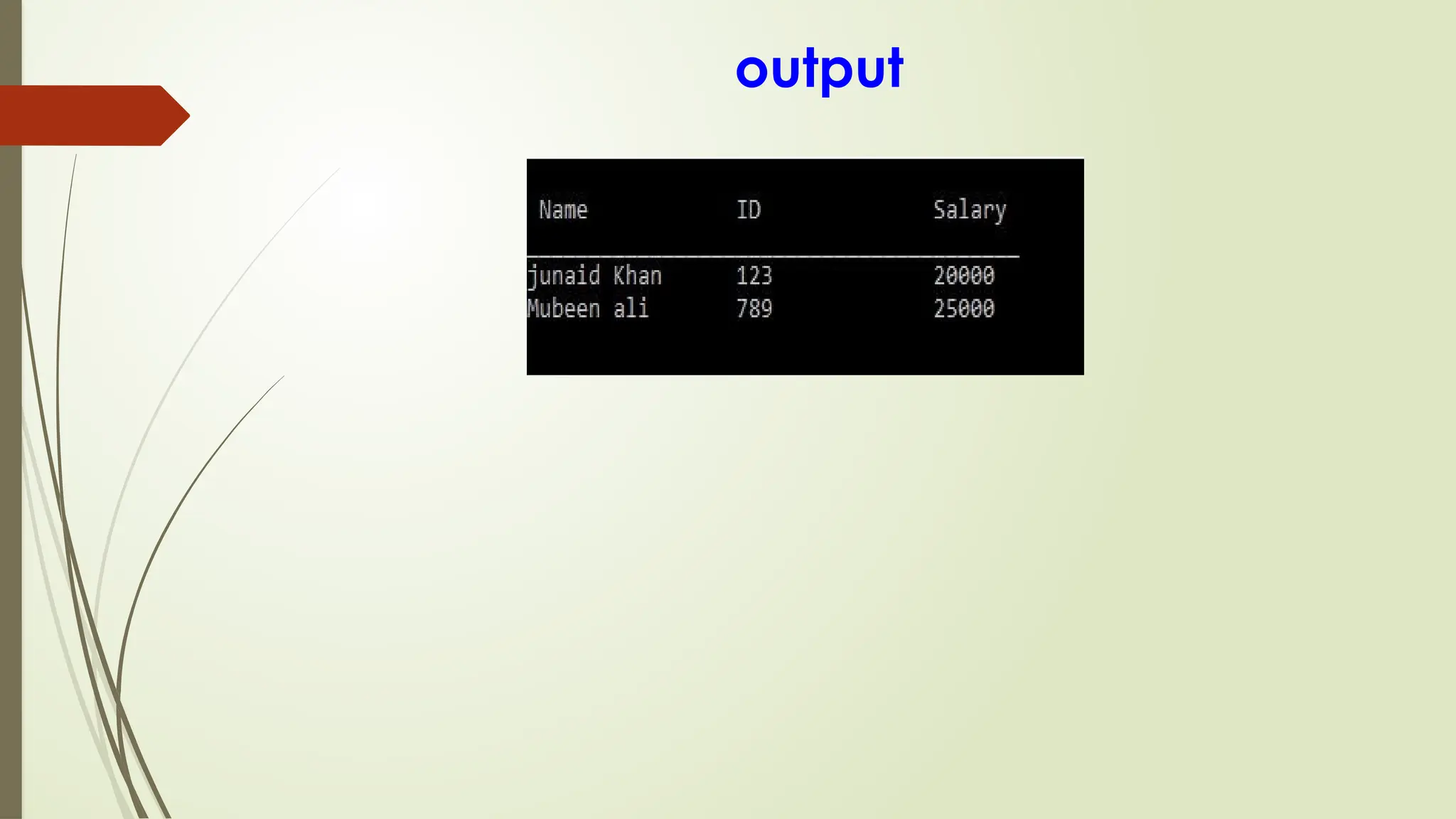The lecture covers advanced concepts of structures in programming, including nested structures, where a structure can contain another structure. It demonstrates how to define a personal record structure that includes a nested date structure for storing birthdate information, and explains how to access these nested members. Additionally, the lecture addresses passing individual structure members, whole structures, and arrays of structures to functions.
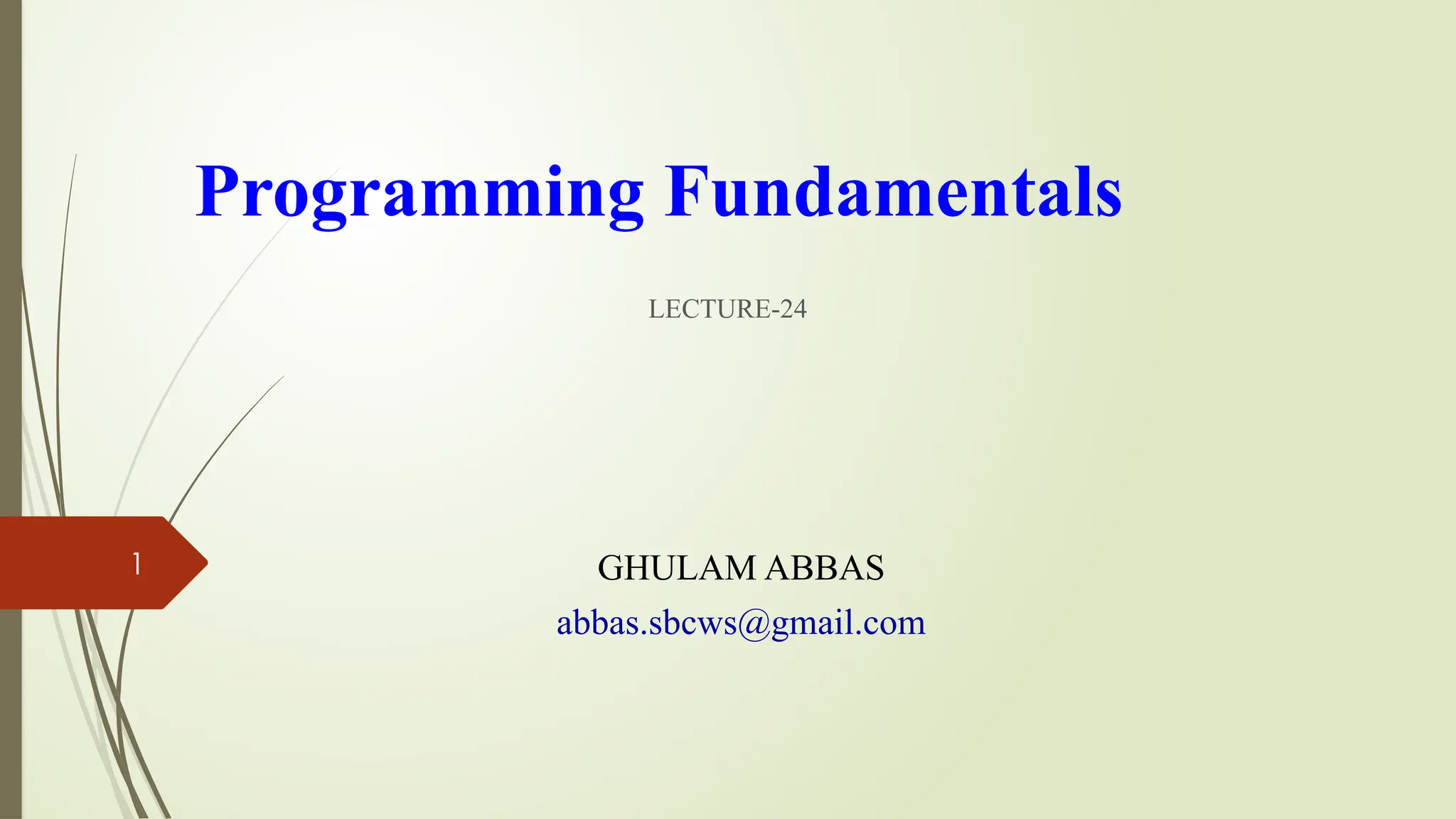
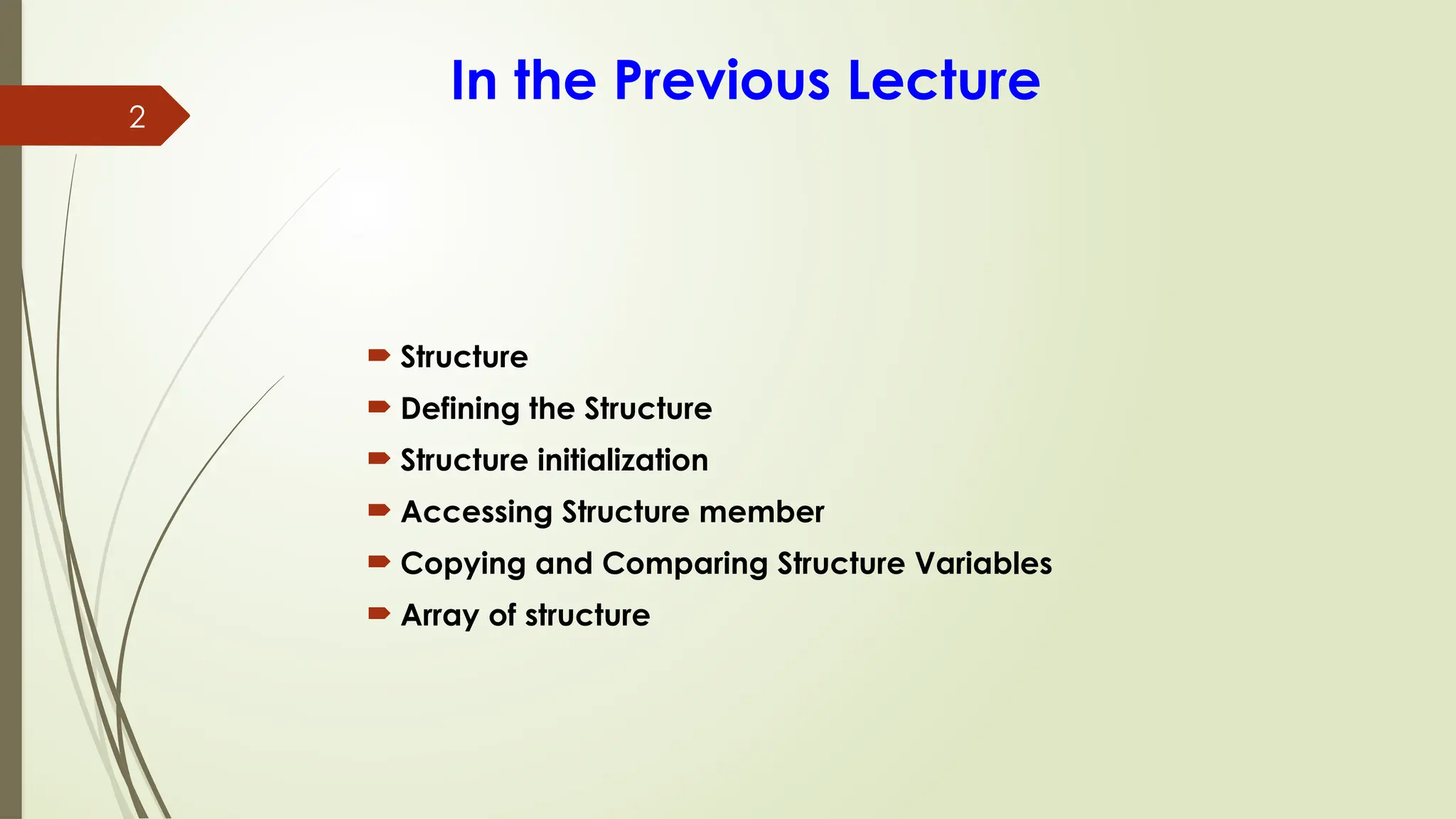
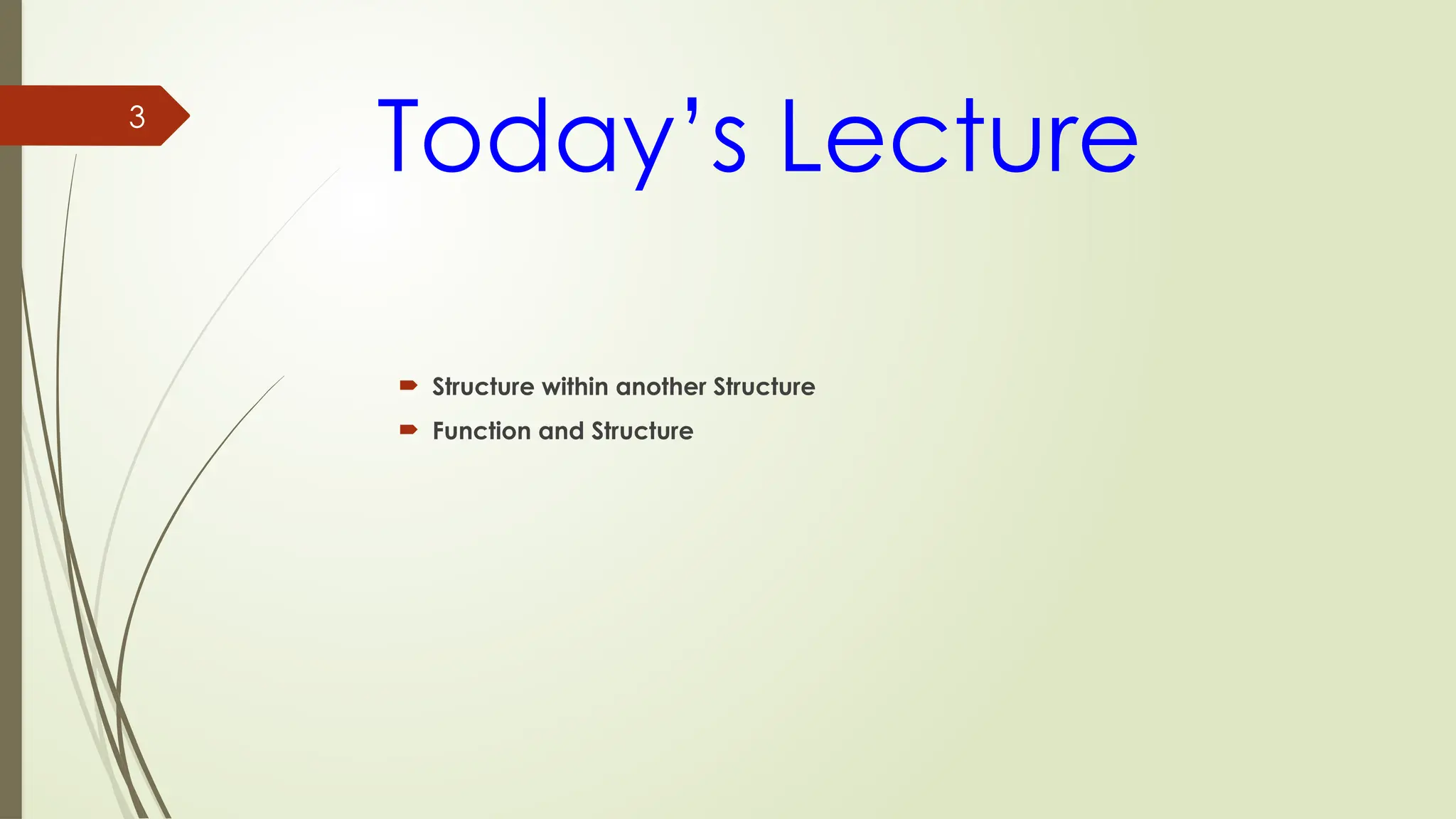
![Structure within another Structure
Also known as nested structure
Let us consider a structure personal_record to store the information of a
person as:
struct personal_record
{
char name[20];
int day_of_birth;
int month_of_birth;
int year_of_birth;
float salary;
}person;](https://image.slidesharecdn.com/programmingfundamentalslecture-24-1-241107171140-6d70d549/75/Programming-Fundamentals-lecture-24-1-pptx-4-2048.jpg)
![Nested structure
In the structure above, we can group all the items related to birthday
together and declare them under a substructure as:
struct Date
{
int day_of_birth;
int month_of_birth;
int year_of_birth;
};
struct personal_record
{
char name[20];
Date birthday; //structure variable
float salary;
}person;](https://image.slidesharecdn.com/programmingfundamentalslecture-24-1-241107171140-6d70d549/75/Programming-Fundamentals-lecture-24-1-pptx-5-2048.jpg)
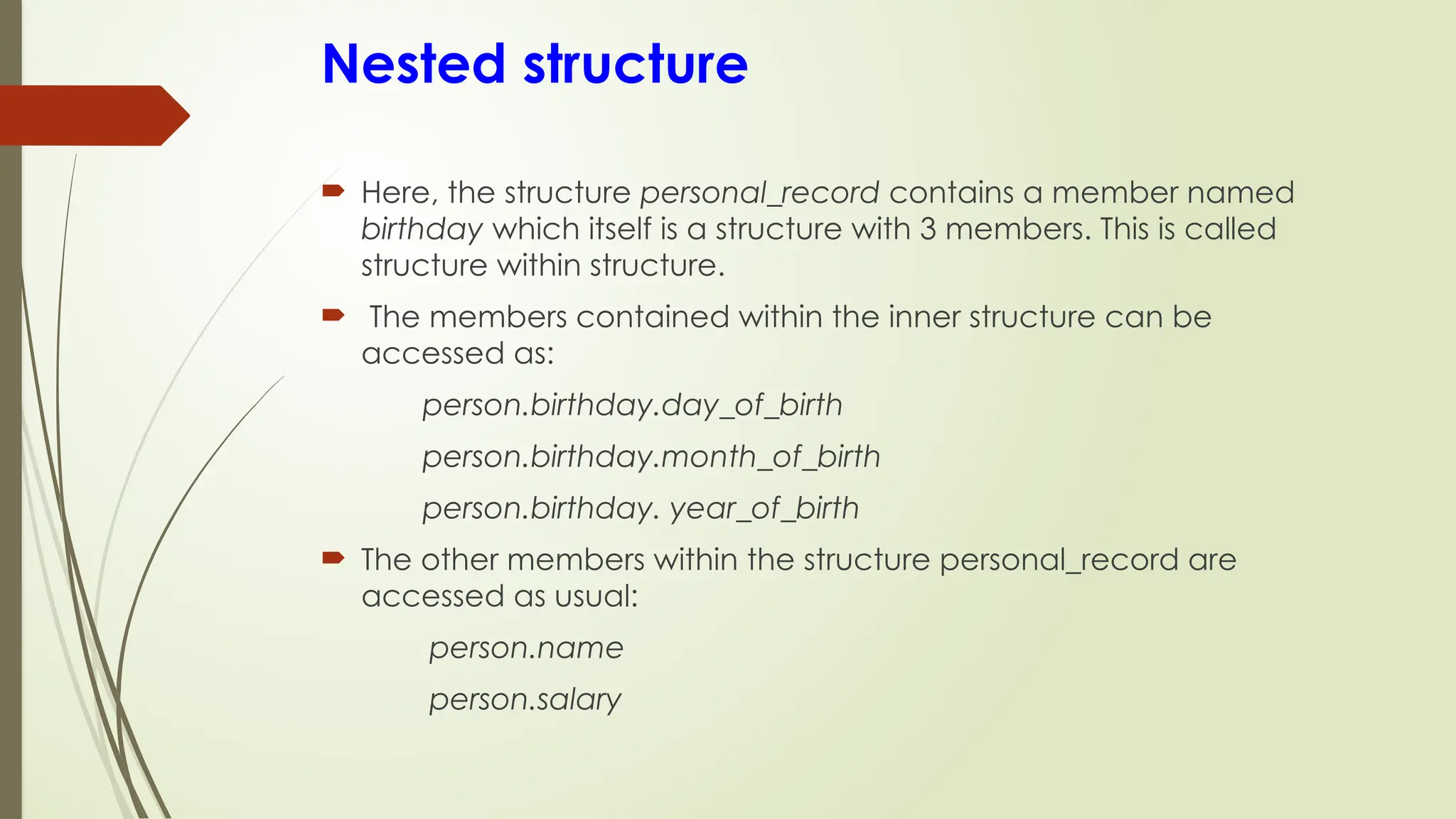
![Example: Nested structure
struct Date
{
int day_of_birth;
int month_of_birth;
int year_of_birth;
};
struct personal_record
{
char name[20];
struct Date birthday; //structure variable
float salary;
};
int main()
{
Date birthday={12,03,200};
personal_record
person={"Ghulam ali",birthday ,20000};
cout<<person.birthday.day_of_birth<<
endl;
cout<<person.name;
}](https://image.slidesharecdn.com/programmingfundamentalslecture-24-1-241107171140-6d70d549/75/Programming-Fundamentals-lecture-24-1-pptx-7-2048.jpg)
![Example: Nested structure
struct date
{
int day;
int month;
int year;
};
struct name
{
char first_name[10];
char middle_name[10];
char last_name[10];
};
struct personal_record
{
float salary;
date birthday,deathday;
name full_name;
};](https://image.slidesharecdn.com/programmingfundamentalslecture-24-1-241107171140-6d70d549/75/Programming-Fundamentals-lecture-24-1-pptx-8-2048.jpg)

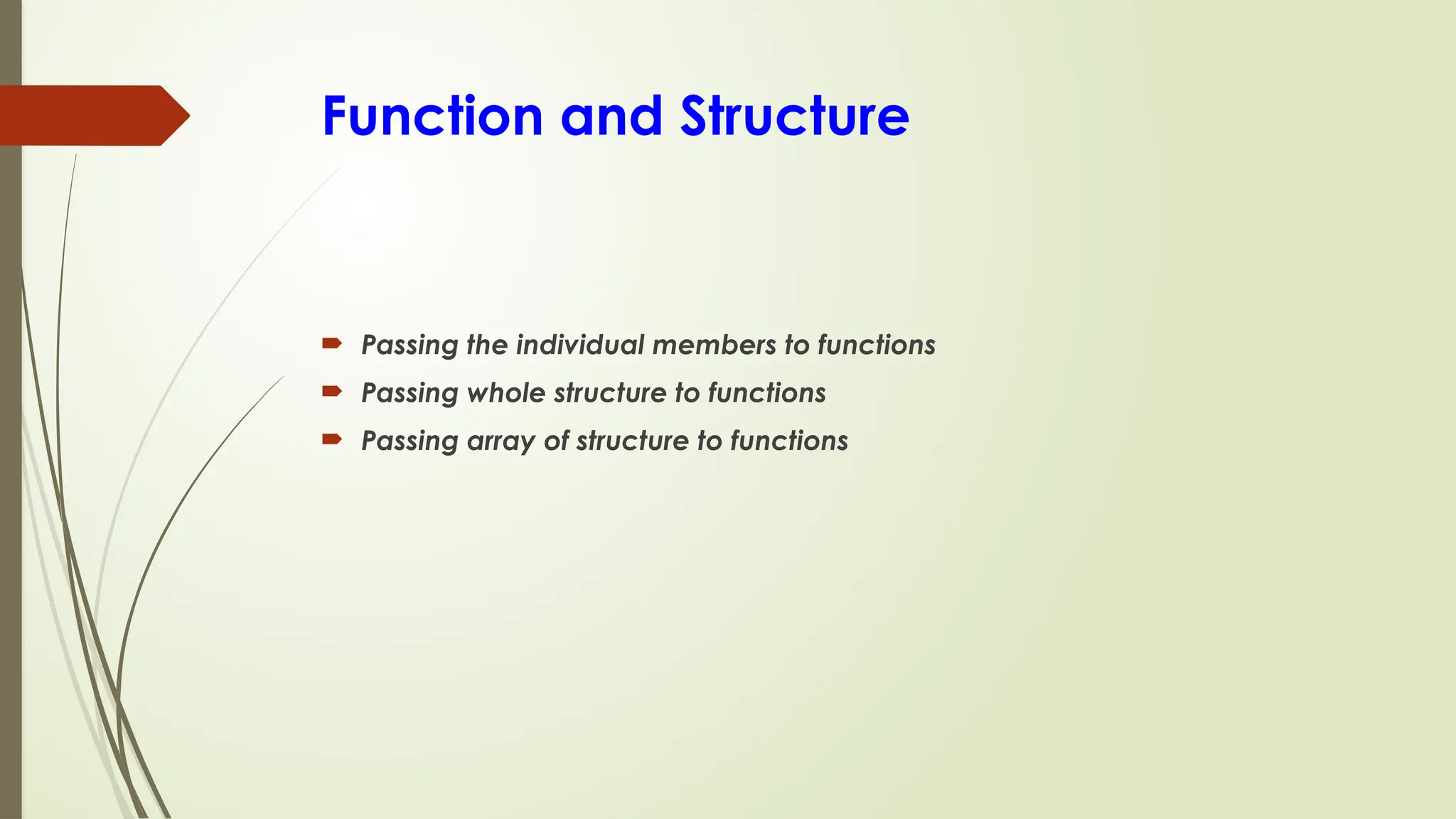
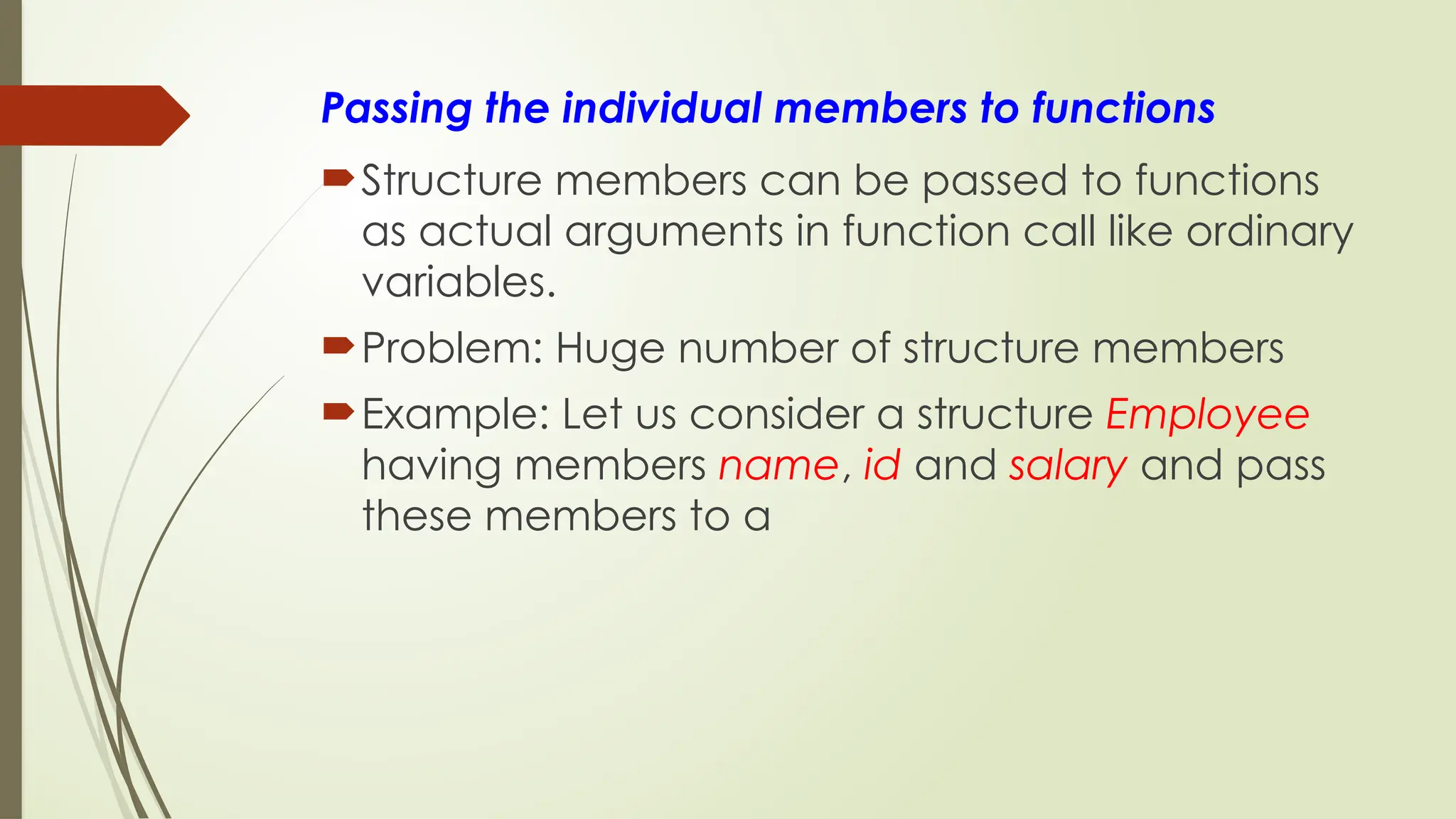
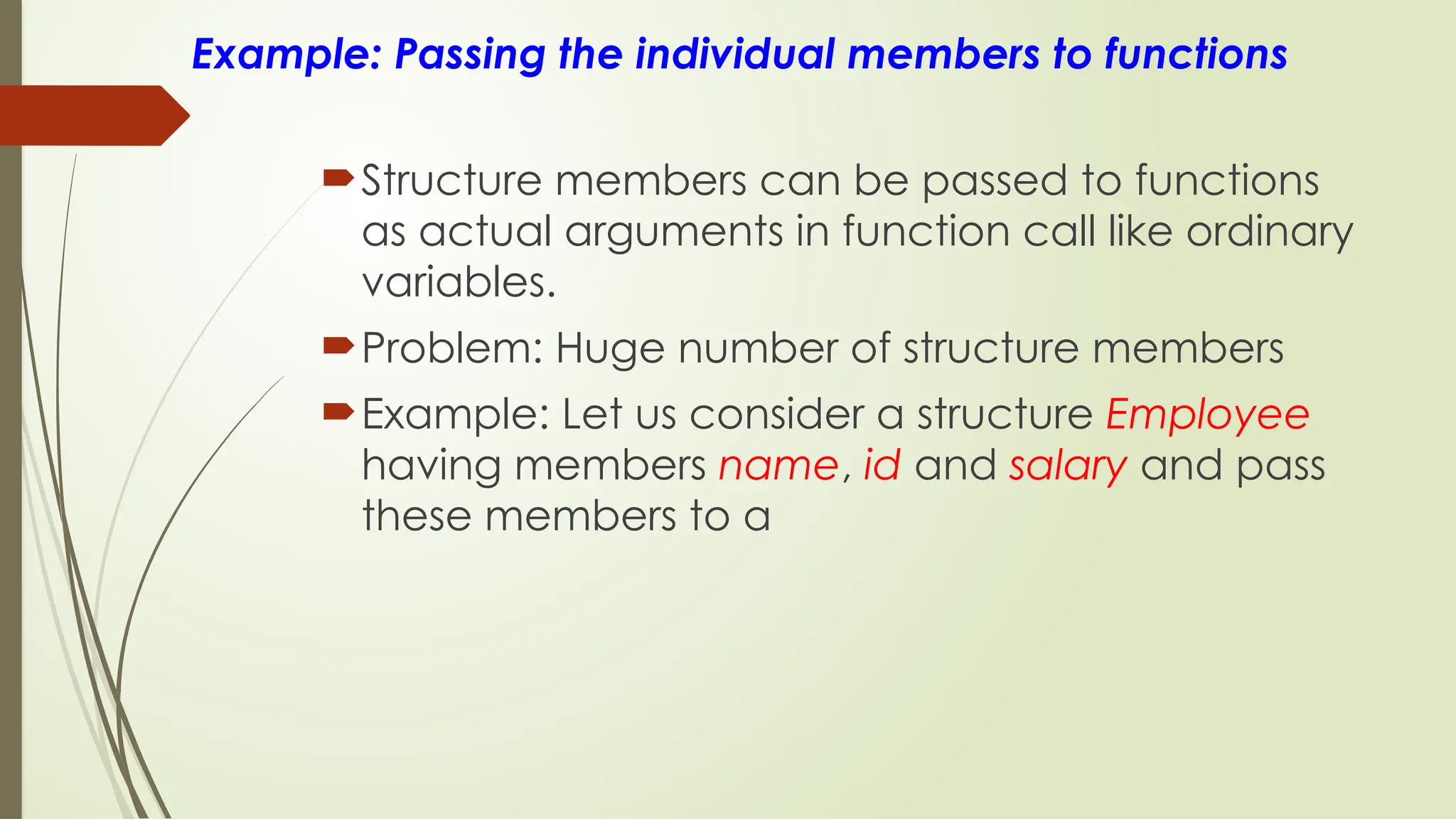
![int display(char [],int,double);f//unction declaration
struct Emplyee
{
char name[20];
int ID;
double salary;
};
int main()
{
Emplyee emp={"junaid Khan", 123, 20000};
display(emp.name,emp.ID,emp.salary);//function call
}
int display(char eName[],int id, double sal)//definition
{
cout<<eName<<"t"<<id<<"t"<<sal;
}](https://image.slidesharecdn.com/programmingfundamentalslecture-24-1-241107171140-6d70d549/75/Programming-Fundamentals-lecture-24-1-pptx-13-2048.jpg)
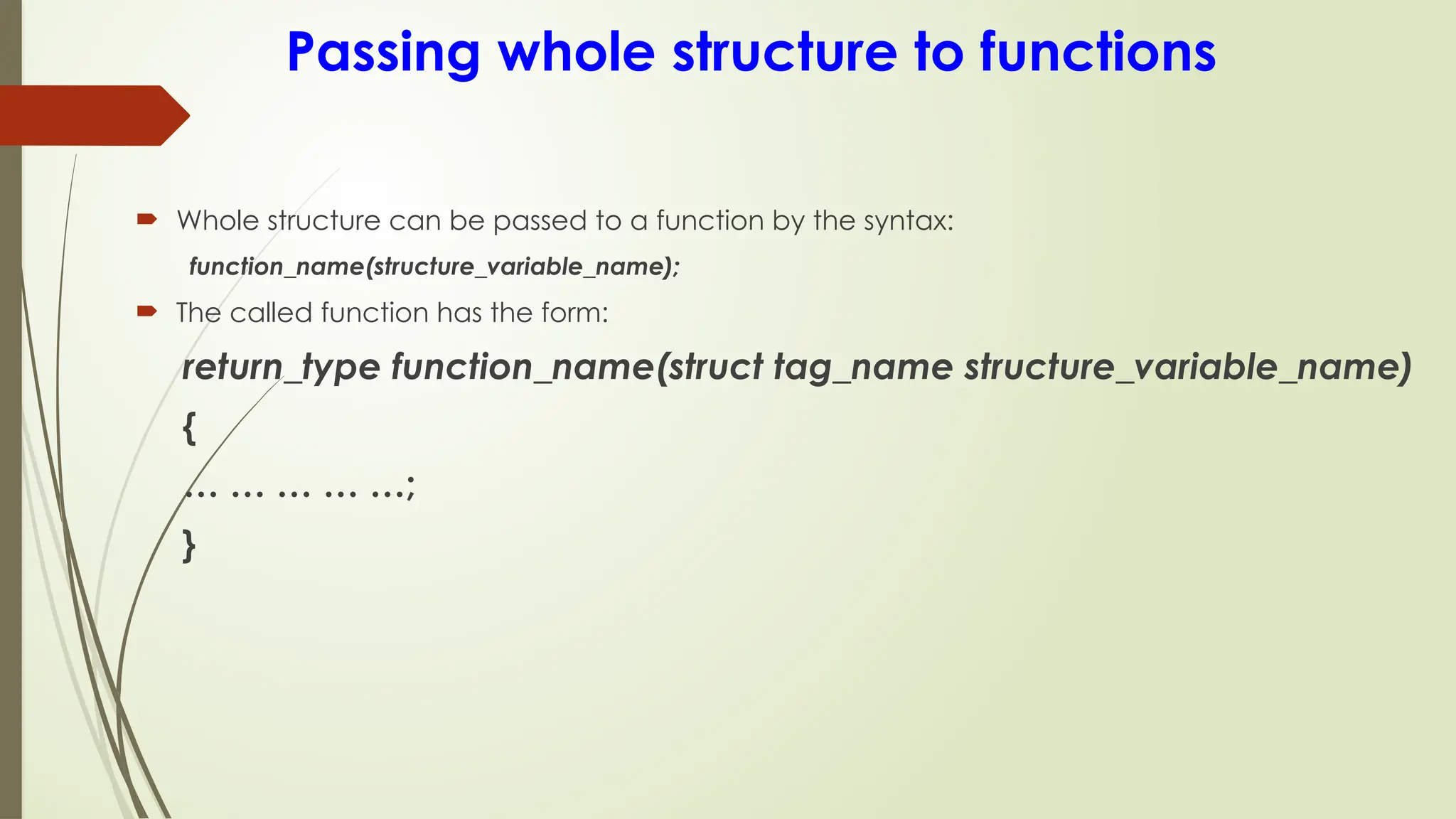
![Example: Passing whole structure to functions
int display(struct Emplyee emp);//function declaration
struct Emplyee
{
char name[20];
int ID;
double salary;
};
int main()
{
Emplyee emp={"junaid Khan", 123, 20000};
display(emp);//function call
}
int display(Emplyee emp)//definition
{
cout<<emp.name<<"t"<<emp.ID<<"t"<<emp.salary;
}](https://image.slidesharecdn.com/programmingfundamentalslecture-24-1-241107171140-6d70d549/75/Programming-Fundamentals-lecture-24-1-pptx-15-2048.jpg)
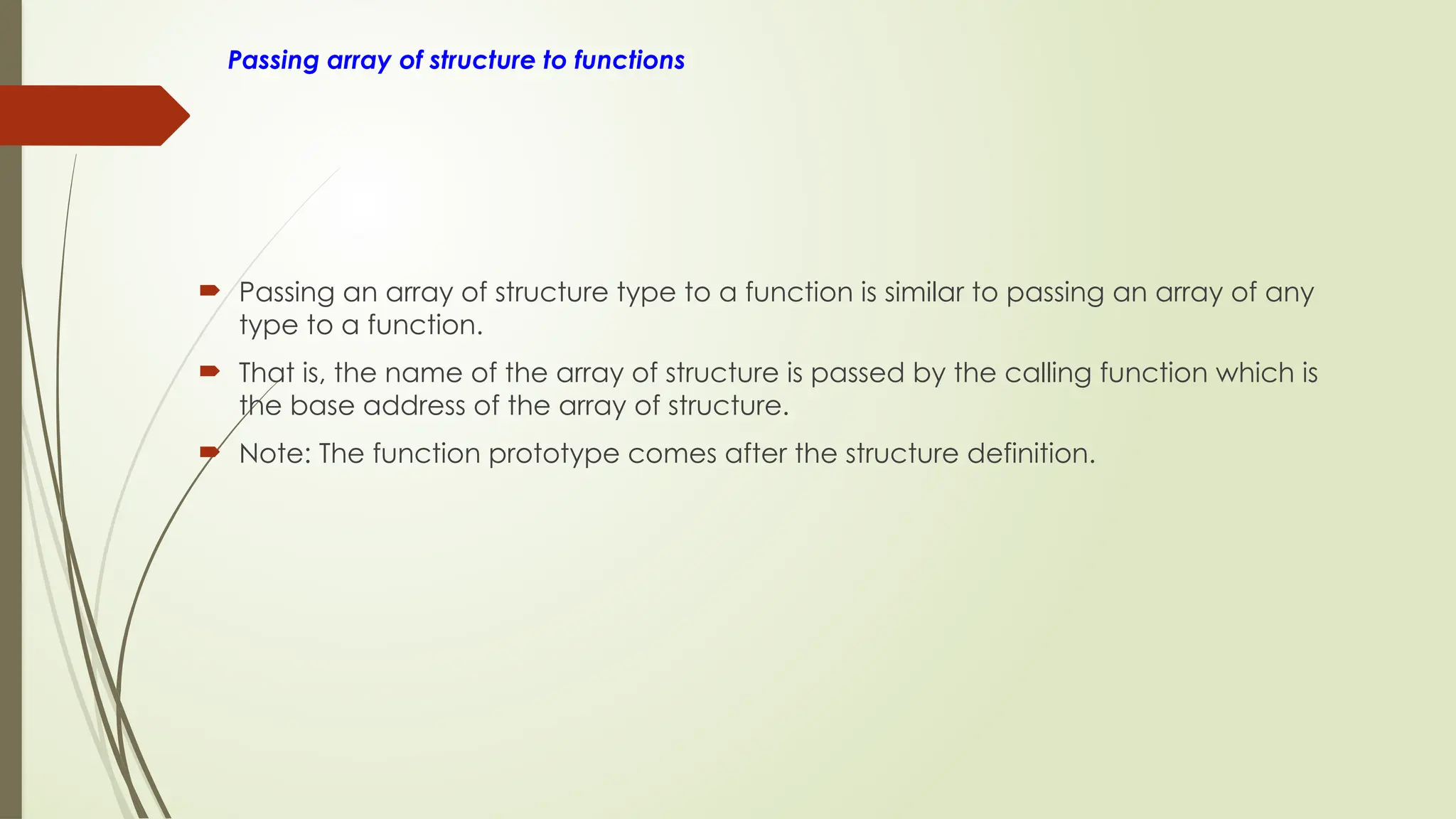
![Example:Passing array of structure to functions
struct Emplyee
{
char name[20];
int ID;
double salary;
};
int display(struct Emplyee
emp[2]);//function declaration
int main()
{
Emplyee emp[2]={{"junaid
Khan", 123, 20000},"junaid Khan", 123,
20000};
display(emp);//function call
}
int display(Emplyee emp[])//definition
int display(Emplyee emp[])//definition
{
int i=0;
cout<<"n Namett IDtt Salaryn";
cout<<"________________________________________
n";
for(;i<2;i++)
{
cout<<emp[i].name<<"t
"<<emp[i].ID<<"tt "<<emp[i].salary<<endl;
}
}](https://image.slidesharecdn.com/programmingfundamentalslecture-24-1-241107171140-6d70d549/75/Programming-Fundamentals-lecture-24-1-pptx-17-2048.jpg)
